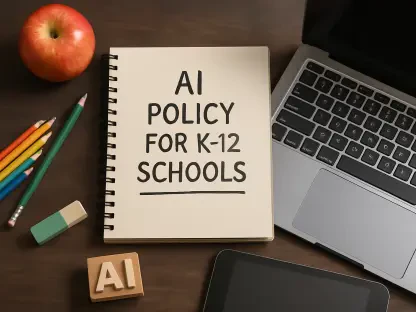The decision of college-bound high school seniors from mixed-status families to apply for federal financial aid in California has become increasingly complex, set against a backdrop of rising deportations and new data-sharing agreements between federal agencies. This is not merely a matter of financial access but involves weighing potential risks against educational aspirations. Concerns surround the disclosure of personal information that could exacerbate vulnerabilities for undocumented family members, particularly as entities like the IRS and U.S. Immigration and Customs Enforcement increase their data collaboration efforts. These circumstances have prompted a deeper exploration into the decisions these families make and the socio-political factors that influence them.
Understanding the Intricacies: Mixed-Status Family Dynamics
Resilience Amidst Ever-Changing Challenges
At the heart of this issue is the resilience demonstrated by students and their families from mixed-status backgrounds, despite the looming threat of deportation. While the potential risks are significant, the drive for educational and economic opportunity often prevails. Data from the California Student Aid Commission indicates a noteworthy trend: an initial drop in applications due to technical difficulties was addressed, with a subsequent increase in submissions. By the deadline, 35% more applications from mixed-status families were filed compared to the previous year, although numbers have yet to recover fully to their figures from two years ago. This mix of hesitation and progression underscores an enduring determination amidst adversity.
Furthermore, students like Janet and Alondra exemplify nuanced assessments of the risk-benefit scenario inherent in these decisions. For those like Janet, the potential future gains of higher education justified exposure to potential risks through application processes. Conversely, Alondra’s family initially hesitated, weighing these factors heavily until existing exposure via tax filings pushed them to proceed with an application. These stories are reflective of wider sentiment among affected families, underscoring personalized decision-making in the face of systemic challenges.
Personal Stories: The Emblematic Experiences of Students
Angela’s account highlights how perceived threats can shape educational choices. Despite securing a scholarship in New York, her trepidation about potential ICE actions against students in politically volatile regions influenced her ultimate decision to attend a local institution. These narratives showcase a broader mentality within these communities: the pursuit of higher education often eclipses immediate fears, yet each family’s approach varies based on specific circumstances.
Moreover, these personal stories lay bare the nuanced thinking driving many students’ choices. The consistent theme is clear: despite formidable hurdles, the aspiration for upward mobility fuels a commitment to education. It is in this resilience that the conversation around mixed-status families and financial aid applications finds a profound human element, rooted in stories of hope, courage, and calculated risks.
Navigating Structural Challenges in Education
Bureaucratic Hurdles and Systemic Issues
Crucially, the landscape of educational aid is further complicated by structural issues within federal institutions, including understaffing at the U.S. Department of Education. These constraints hinder the level of support available to FAFSA applicants, compounding the complexity of navigating financial aid. Such challenges were evident during recent application cycles, where technical glitches delayed many submissions. These technical issues highlight systemic inefficiencies, emphasizing the need for improved accessibility and reliability in government services—a necessity acutely felt by vulnerable populations like those from mixed-status families.
Individuals like Fernanda Arteaga offer a lens into this reality; despite facing numerous technical challenges, her determination led her to secure the aid needed to further her education. Fernanda’s experience serves as a testament to the resilience and steadfastness exhibited by many in overcoming bureaucratic obstacles. Yet, it also underscores a pressing requirement for systemic reform aimed at streamlining processes and ensuring consistent support for all students, regardless of background.
California’s State-Level Solutions
In contrast, California has implemented specific state-level measures like the California Dream Act Application (CADAA), offering an alternate pathway for financial aid to students without permanent legal status. CADAA provides crucial financial support while protecting applicants’ information from federal immigration authorities, representing a critical resource for students concerned about exposure. Legislative measures, like Senate Bill 323, propose expanding state financial aid to include more students from mixed-status families, reflecting a commitment to educational equity. These initiatives signify a level of state advocacy that seeks to supplement federal shortcomings and foster inclusive opportunities for all students.
By advancing such proposals, California’s approach serves as a potential model for comprehensive support systems that prioritize access over exclusion. This commitment to equity underscores a broader state-level dialogue aimed at reducing disparities and providing robust funding opportunities to students without necessitating federal compromise. Such landscape shifts offer a beacon of progress and may inspire similar reforms in other states, bolstering broader educational inclusion for marginalized groups.
Charting a Path Forward: Strategies and Considerations
Balancing Aspirations with Risk
The decisions facing mixed-status families encapsulate the intricate balance between educational aspirations and familial safety. With the rise in deportations and enhanced data-sharing environments, these families navigate a labyrinth of considerations, weighing the threat of exposure against dreams of higher learning. Political and social climates further compound these decisions, affecting perceptions of risk and opportunity. While the overarching quest for education remains steadfast, these considerations reflect a spectrum of strategies families deploy to reconcile aspirations with potential dangers.
In response, advocacy for inclusive policies continues to gain momentum, reflecting larger societal efforts to bridge gaps in access to education. Efforts like community-based workshops aim to better inform families about their options and the comparative safety of application processes like FAFSA and CADAA. In offering clear, factual guidance tailored to the unique concerns of mixed-status households, these initiatives foster a climate of informed decision-making—and, ultimately, empowerment.
Legislative Advocacy and Policy Shifts
The drive to expand educational access informs ongoing legislative advocacy, prompting state-specific solutions aimed at insulating students from broader federal constraints. California’s Senate Bill 323 premises itself on extending financial aid to undocumented students, epitomizing holistic state-level strategies that prioritize educational equity as a foundational principle. Coupled with broader national discussions around data privacy and immigration reform, these legislative efforts underscore a dynamic and evolving dialogue, geared toward reimagining educational possibilities for those historically marginalized by broad policy frameworks.
As discussions progress, students and families emerge as pivotal agents of change, wielding advocacy to influence foundational policy reconsiderations. Their determination, coupled with legislative strides, offers glimpses into a transformative educational landscape—one where equity and inclusion are central tenets, crafting pathways for academic and socio-economic success, irrespective of background or circumstance.
Looking to the Future: Preserving Aspirations and Opportunities
High school seniors preparing for college face a daunting decision when considering federal financial aid applications in California, especially those hailing from mixed-status families. The choice is complicated by rising deportation rates and evolving data-sharing agreements among federal agencies. This dilemma goes beyond mere financial accessibility. Students must balance the potential perils against their educational goals. Concerns arise regarding how submitting personal information might heighten risks for undocumented relatives, especially as agencies like the IRS and ICE strengthen their data-sharing efforts. Such circumstances have spurred families to delve deeply into their decision-making processes and consider the socio-political influences that drive their choices. The increased collaboration between government agencies has intensified the vulnerabilities faced by these families, forcing them to weigh the benefits of higher education against potential exposure. Students are urged to carefully consider these complex dynamics, ensuring they’re fully informed and prepared to navigate the risks associated with seeking financial aid amidst a challenging political landscape.









